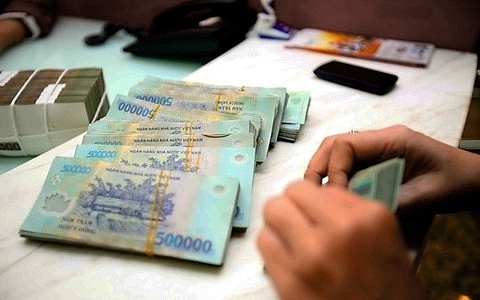Banks aim to up capital ahead of new standards
 |
| Experts warn that when BASEL II standards are applied, banks’ CAR will plunge due to an increase in the quantum of their risky assets.-Photo cafef.vn |
According to the National Financial Supervisory Commission, many banks are under great pressure to hike capital to satisfy the SBV’s regulations on meeting Basel II standards by the end of 2020.
Under SBV’s Circular No 41/2016/TT-NHNN, banks must maintain a capital adequacy ratio (CAR) of at least 8 per cent as per Basel II norms, starting in 2020.
With the new regulation, which replaced Circular 13/2010/TT-NHNN, the CAR of many banks will fail to reach the minimum level set by the SBV if they fail to increase capital.
CAR is expressed as a percentage of the bank’s capital to its risk-weighted assets and is one of the main metrics used to determine the stability and efficiency of financial systems. The higher the bank’s capital adequacy ratio, the higher the degree of protection of depositor’s assets.
According to the NFSC’s report, the average CAR of the banking sector has been consistently falling since 2017.
It dropped from 11.6 per cent at the end of 2016 to 11.1 per cent at the end of last year. The ratio continued to go further down by 0.25 percentage points to 10.85 per cent by the end of February 2018, of which, State-owned commercial banks decreased by 0.16 percentage points and joint stock commercial banks reduced by 0.44 percentage points.
Analysts say this is because banks’ assets have grown much more rapidly than their equity.
In 2016, the sector’s total assets went up by 16 per cent but charter capital up by only 6.11 per cent.
Last year, all big State-owned commercial banks including VietinBank, Vietcombank and BIDV had total assets exceeding VND1 quadrillion (US$43.85 billion) after rising by 9.3 per cent while their equity grew by only 4.6 per cent.
Experts warn that when BASEL II standards are applied, banks’ CAR will plunge due to an increase in the quantum of their risky assets.
Meanwhile, the group of State-owned banks has an average CAR of 9.69 per cent, close to the stipulated minimum. It will plunge below 8 per cent when BASEL II standards are applied.
Therefore, most banks planned to increase their charter capital in recent years.
The stock market surged significantly, helping banks to raise charter capital through share sales and dividend payouts by shares; tinnhanhchungkhoan.vn quoted the National Financial Supervisory Commission as saying.
To capitalise on the growth of the stock market, many banks have rushed to issue shares for capital increase.
Military Bank (MB) and VPBank, for example, recently received the SBV’s approval to raise their charter capital. Accordingly, VPBank will increase its charter capital from VND15.7 trillion (US$694.7 million) to VND25.299 trillion, while MB’s charter capital will likewise raise from VND18.15 trillion to VND21.6 trillion.
What the stars mean:
★ Poor ★ ★ Promising ★★★ Good ★★★★ Very good ★★★★★ Exceptional
Related Contents
Latest News
More News
- Tax sector wraps up 2025 and sets priorities for next year (December 25, 2025 | 14:00)
- A tipping point for digital and hybrid wealth management in Vietnam (December 23, 2025 | 13:33)
- $250 million deal targets women-owned SMEs, sustainable agriculture (December 22, 2025 | 17:40)
- Stock market posts resilient 2025 performance (December 19, 2025 | 18:17)
- Citi Vietnam receives 2025 AmCham CSR recognition (December 19, 2025 | 16:35)
- As global green supply chain reshapes, will Vietnam be left behind? (December 19, 2025 | 08:00)
- Banks gear up for massive capital increases (December 18, 2025 | 17:04)
- Securing capital and efficiency for Vietnam’s 2026-2030 growth ambitions (December 17, 2025 | 10:00)
- Energy sector in need of blended finance mechanisms (December 17, 2025 | 09:00)
- Vietnam still has room to mobilise capital for sustainable growth (December 17, 2025 | 08:57)

 Tag:
Tag:




















 Mobile Version
Mobile Version